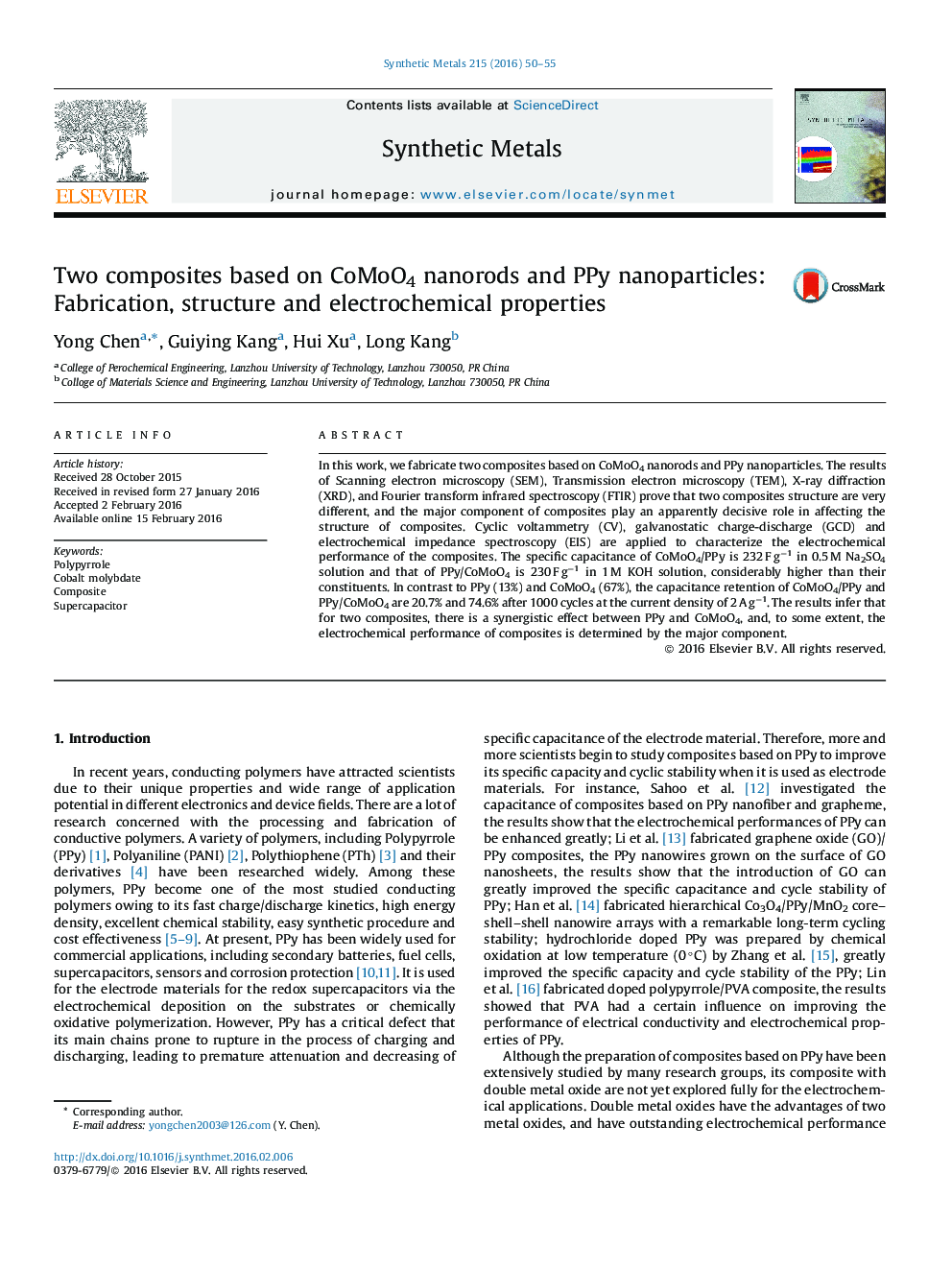| Article ID | Journal | Published Year | Pages | File Type |
|---|---|---|---|---|
| 1440248 | Synthetic Metals | 2016 | 6 Pages |
•CoMoO4/PPy and PPy/CoMoO4 composites were fabricated by a facile method using PPy and CoMoO4 as major material, respectively.•The structure of CoMoO4/PPy and PPy/CoMoO4 is similar to its major material.•The electrochemical property of composite resembles its major material.•There is a synergistic effect between PPy and CoMoO4.
In this work, we fabricate two composites based on CoMoO4 nanorods and PPy nanoparticles. The results of Scanning electron microscopy (SEM), Transmission electron microscopy (TEM), X-ray diffraction (XRD), and Fourier transform infrared spectroscopy (FTIR) prove that two composites structure are very different, and the major component of composites play an apparently decisive role in affecting the structure of composites. Cyclic voltammetry (CV), galvanostatic charge-discharge (GCD) and electrochemical impedance spectroscopy (EIS) are applied to characterize the electrochemical performance of the composites. The specific capacitance of CoMoO4/PPy is 232 F g−1 in 0.5 M Na2SO4 solution and that of PPy/CoMoO4 is 230 F g−1 in 1 M KOH solution, considerably higher than their constituents. In contrast to PPy (13%) and CoMoO4 (67%), the capacitance retention of CoMoO4/PPy and PPy/CoMoO4 are 20.7% and 74.6% after 1000 cycles at the current density of 2 A g−1. The results infer that for two composites, there is a synergistic effect between PPy and CoMoO4, and, to some extent, the electrochemical performance of composites is determined by the major component.
